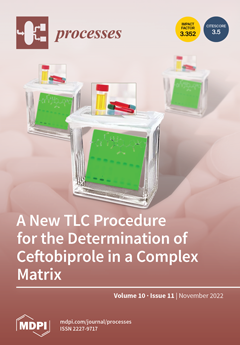In the process of oilfield development, the use of CO
2 can improve the degree of reservoir production. Usually, CO
2 is injected alternately with water to expand the spread range of CO
2, and CO
2 presents a supercritical state in
[...] Read more.
In the process of oilfield development, the use of CO
2 can improve the degree of reservoir production. Usually, CO
2 is injected alternately with water to expand the spread range of CO
2, and CO
2 presents a supercritical state in the formation conditions. In the process of alternating CO
2 and water injection, wellbore freezing and plugging frequently occur. In order to determine the cause of freezing and plugging of injection wells, the supercritical CO
2 flooding test area of YSL Oilfield in China is taken as an example to analyze the situation of freezing and plugging wells in the test area. The reasons for hydrate freezing and plugging are obtained, the distribution characteristics and sources of hydrate near the well are clarified, and a coupling model is established to calculate the limit injection velocity and limit shut-in time of CO
2 and water alternate injection wells. The results show that the main reasons for freezing and plugging of supercritical CO
2 water alternate injection wells are long time shut down after alternate injection, improper operation when stopping injection and starting and stopping pumps, and slow injection speed during alternate injection. In the process of supercritical CO
2 water alternative injection, in the case of post-injection, the CO
2 in the formation will reverse diffuse to the injection well end. With the continuous increase of daily water injection, the initial diffusion position and the time of CO
2 diffusion to the perforated hole after well shut-in gradually increase. The time of CO
2 reverse diffusion to the bottom of the well is 1.6–32.3 d, and the diffusion time in the perforated hole is 1.0–4.5 d. Therefore, the limit shut-in time following injection is 2.6–36.8 d. Following gas injection, the limit shut-in time of a waterproof compound can be divided into three stages according to the change of wellbore pressure: the pressure stabilization stage, pressure-drop stage and formation fluid-return stage. The limit shut-in time of a waterproof compound following gas injection is mainly affected by permeability, cumulative gas injection rate and formation depth. The limit shut-in time of a waterproof compound is 20.0~30.0 days. The research results provide technical support for the wide application of CO
2 flooding.
Full article





